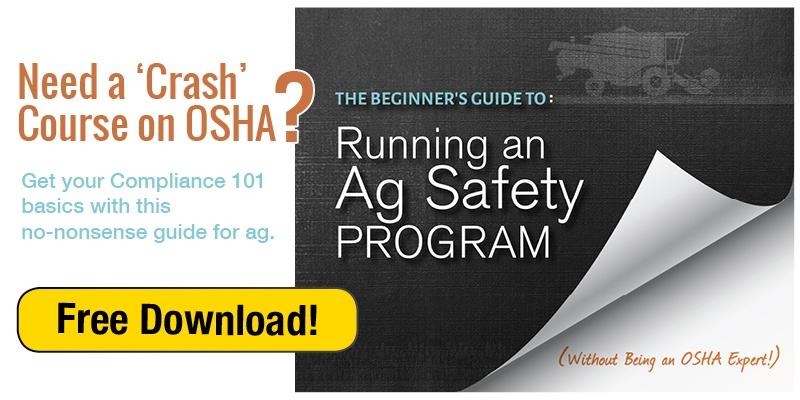As we mentioned earlier this month, chainsaws are a necessary—and dangerous—piece of equipment that is designed to make the job of cutting wood faster and easier.
Everyday, injuries occur as a result of unsafe chainsaw operation at home and at work. The average chain saw accident requires 110 stitches*, and the average cost of a stitch in the US is $500.00, so the average chain saw accident costs $55,000—and that’s just to put the person back together. It doesn’t include the cost of rehab, lost work, increased insurance premiums, etc.
Thankfully, when you include proper chainsaw-safety training into your farm operations' safety program, you'll be able to minimize injury and maximize productivity when your employees use chainsaws.

Here are 10 chainsaw-safety do’s and don’ts—
Don’ts:
- Never operate the saw when holding it above your shoulders.
- Never operate the saw when you're standing on a ladder.
- Never saw one-handed.
- Never do a backhander cut, where you're pulling the saw toward your body.
- Never stand downhill from a log while cutting it, as the log can roll over you.
Do's:
- Engage the chain brake whenever the saw is idling.
- Keep the bar behind you while you walk.
- Use the bar cover when the saw is powered off to keep the bar from cutting or snagging you.
- Hold the grips firmly, using both hands and at all times.
- Use extra caution on storm-damaged trees, because they often are interwoven, lean at odd angles, and contain broken limbs. Leave trees that have fallen into power lines to the electric-power professionals.
These are the most basic chainsaw-safety tips. A full chainsaw-safety training program will cover more in-depth training with such topics as safety requirements for gasoline-powered chainsaws, recognizing other dangerous chainsaw-safety hazards, as well as a deeper understanding of felling, limbing and bucking.
*Source: http://www.elvex.com/facts08.htm



